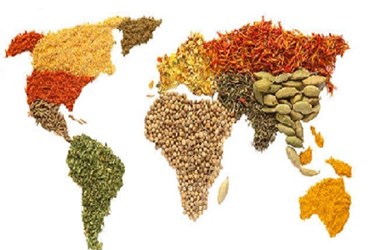How Cargill Plans To Help Feed The World
By Karla Paris

The company’s 2014 annual report focuses on solving problems with the global-food system in a world that is more urban, affluent, and populous
During the last 50 years, food has become more plentiful, available, and affordable for people around the world due to increasing agricultural productivity and higher yields. However, the global-food system has challenges ahead that still need addressed. Outlined in Cargill’s 2014 Annual Report, the conglomerate discusses how the company is addressing the challenges of feed an increasingly-hungry world.
Demand Continues To Grow
The world’s need for agricultural production — regarding food production, animal feed, and fuel — will continue to grow alongside increasing population, urbanization, and household incomes. This year, Cargill arranged $25 billion in financing for its partners to help grow their businesses, including a substantial volume of prepayments to commodity suppliers and deferred financing to buyers. Additionally, the company’s ocean transportation group continues to make more than 6,000 port calls per year, shuttling vital commodities to every part of the globe.
Hunger Persists
Despite progress, 842 million people — about one in eight people in the world — suffer from chronic hunger. This means not having enough food on a regular basis for an active and healthy life. With its 143,000 employees in 67 countries, Cargill is in position to connect globally to serve the distinctive needs of customers locally. From Argentina and Australia to Zambia and Zimbabwe,
Cargill is reaching farther across the globe to bring its company closer to its customers. Cargill invested more than $3 billion in itself during fiscal 2014, with nearly half of those funds being directed to new and expanded facilities. Approximately 20 percent was dedicated to acquisitions and joint ventures. The remainder went to base-level expenditures that help keep plants safe, energy efficient, and environmentally sound.
More Efficient And Resilient Agriculture
The global-food system must deliver more calories and better nutrition at even-higher levels of efficiency. It must also conserve land, water, and energy resources, and adapt to a changing climate. By investing in technology and services that support more refined agronomic decisions, Cargill is helping U.S. farmers achieve the highest yield per dollar of inputs without depleting soil. The company’s NextField precision agriculture system uses geo-referenced soil sampling to map a field’s nutrient profile. Then, Cargill’s agronomists work with farmers’ customers to create crop plans, delineate management zones, and develop prescriptions for seeding and fertilizing at rates tagged to the land’s variability.
Widespread Obesity
The increase in global obesity since 1980 has been substantial and widespread. Today, 2.1 billion people — nearly 30 percent of the world’s population — are either obese or overweight. More than 60 percent of the obese live in developing countries.
In an effort to provide healthier alternatives for consumers, Cargill has invested in research and development to tackle obesity. The company is focusing on products such as its ViaTech, a stevia-based sweetener intended to assist food and beverage manufacturers achieve optimal sweetness with significant sugar reduction. Cargill has also put substantial efforts into FlakeSelect, a solution to aid food manufacturers’ lower sodium by up to 50 percent without sacrificing taste.
Cargill believes despite an uphill battle, the world will be able to feed its growing population. Advances in modern agriculture are boosting productivity and efficiency across the supply chain. The company is optimistic that the global-food system will continue to meet the needs of a more populous, urban, and affluent world, and will do so with sustainable and responsible means.
